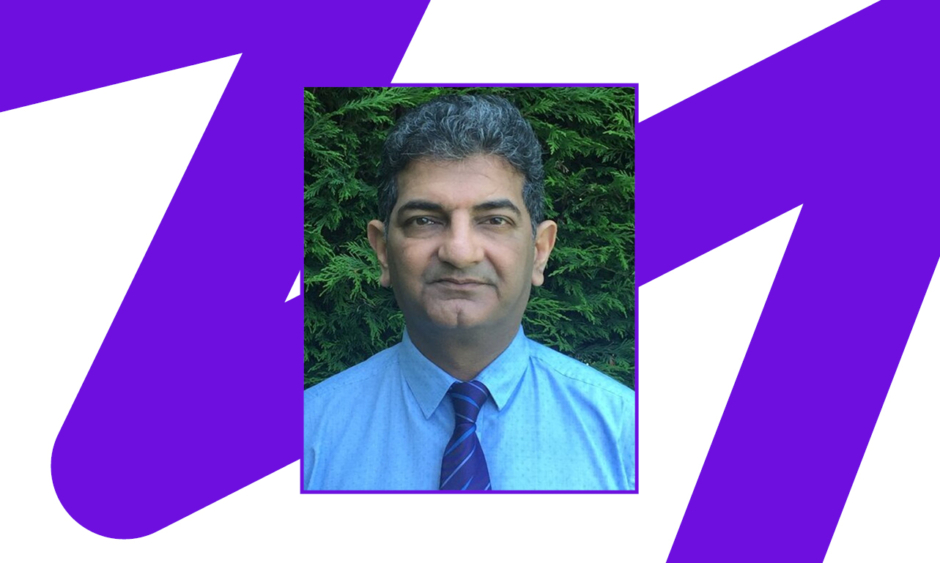Tahir Masud | Consultant Physician in Geriatric and General Medicine, Nottingham University Hospitals NHS Trust, UK; Secretary of the Clinical Section of the International Association of Geriatrics and Gerontology (IAGG)-European Region; Member of the Executive Council of the European Geriatric Medicine Society (EuGMS); Former President of the British Geriatrics Society (BGS); Former President of the European Union of Medical Specialists (UEMS)-Geriatric Medicine Section
Citation: EMJ. 2023; DOI/10.33590/emj/10300494. https://doi.org/10.33590/emj/10300494.
![]()
When did you first decide on your specialism of geriatric medicine, and what sparked your interest in this area of medicine?
I was inspired to go into geriatric medicine in the late 1980s and early 1990s, when I was a registrar in medicine in Newcastle, UK. I worked with some truly inspirational geriatricians at the time, which I think was a major factor in my decision. What I liked about geriatric medicine was the holistic and multidisciplinary approach to older people. I really enjoyed working in a close team of different healthcare professionals, and I can’t underemphasise the role played by the people that you work for, who inspire you.
Do you think that there are any misconceptions about geriatric medicine?
I think many people still believe that a lot of the conditions that occur in older people are due to ageing, and that we can’t do too much about them. However, nothing could be further away from the truth. Let’s take falls as an example. When we look at the risk factors which might contribute to an older person falling, we find that often there is something we can do to address many of them, allowing us to start a programme of management or treatment that can help to prevent further falls. That’s just an example of misconceptions that people have.
You have previously mentioned that education surrounding geriatric medicine can be nuanced and challenging. Can you explain why this is the case?
Geriatric medicine overlaps with all other medical fields, and in effect, we’re really the only old-style general physicians left, alongside maybe the specialty of acute medicine. The nuances are that we really need to think about not only the physical aspects of health in older people, but also the psychological and social aspects of the older person, as well as considering their frailty status, which often determines how we’re going to manage them. I think these are some of the nuances which we need to improve upon.
In your 2022 article, ‘The giants of education in geriatric medicine and gerontology’, you highlight the need for wider knowledge of gerontology in both patients and the public. Can you explain some of the key gaps you see in geriatric knowledge?
Given the demographic trends and the ageing population, geriatricians will not have the capacity to look after everyone, due to the growing size of this age group. You would need a vast increase in geriatric specialists, which I don’t think is realistic. We do need to increase the number of geriatricians, but more importantly, we need to educate and train our colleagues in other specialties. And that’s a challenge. Bernard Isaacs coined the so-called ‘geriatric giants’, or the four ‘I’s: intellectual impairment, incontinence, immobility, and instability. In the article, my colleagues and I fashioned four ‘I’s in other areas. For example, in education, we have investment, inspiration, integration, and interprofessionality; and in research, there is interest, income, innovation, and impact. I think these are some of the gaps in trying to improve healthcare for older people which we need to work more on.
You contributed to ‘World guidelines for falls prevention and management for older adults: a global initiative’ in 2022. Can you enlighten our readers about some of the key recommendations you and your colleagues concluded?
Falls have a major impact on older people across the world. We put these guidelines together because there was inconsistency in approaches across different countries. We thought it was important to try and harmonise this approach, recognising that we still must consider differences in healthcare and socio-economic level. But this was a mammoth project, with 96 world experts from 39 countries. There were 12 working groups looking at different aspects of falls, with one working group looking at patient perspective, which were not considered by previous falls guidelines. Another patient-focused working group made sure that other working groups would be relevant to what the needs were. Some of the themes were the problems caused by polypharmacy, where people are having side effects from taking too many medications; this can cause falls. We then came out with some recommendations regarding how we should think about this issue, and how we should think about deprescribing some of the more harmful medications, which might contribute to the falls. Another example was the importance of exercise. One working group looked closely at the benefits of exercise in reducing falls, and outlined what type of exercises are important for older people. Another working group looked at how we could reduce falls in care homes and hospitals. These are just a few examples of important issues that merit more attention.
You are a member of, and have been associated with, multiple congresses focusing on geriatric medicine, including a term as President of the British Geriatrics Society and a role on the Executive Council of the European Geriatric Medicine Society (EuGMS). What impact do you believe that membership with these societies has, both directly on physicians and indirectly on patients?
It has an important role, as it allows us to learn from each other. There are lots of innovations going on in different parts of Europe, and the world. One of the greatest methods to keep up to date with these developments is to go to congresses, meet people from other areas and other countries, see what they’re doing, and try to apply it in your own country. As an example, there’s a lot of development in technology, and how that might be useful in treating older people; we have some interesting data from Denmark and the Netherlands looking at this. Likewise, there are some innovations in the UK on frailty and assessing frailty through electronic databases, which could be very useful in other countries.
Sarcopenia is one of the most common geriatric diseases. Have you seen much improvement in its treatment over the last few years?
I think this is an area of ongoing research and development. We are beginning to recognise sarcopenia better, and it’s got an International Classification of Diseases (ICD) code now, which is helpful. However, we still have a long way to go in terms of treating and preventing sarcopenia. We know that resistant exercise is probably the most effective intervention, but there is also a lot of research going on with proteins. Some of these research findings are positive, some are not, and some are contradictory, so there’s still work to do in that area. We are also learning a lot about deconditioning, so we now know that it doesn’t take very long to be in hospital and bedbound to develop sarcopenia and become deconditioned. We really need to try and prevent this by getting patients out of bed as soon as possible. Innovative research trials in Denmark are looking at robots who try to prevent deconditioning and sarcopenia in older people. We are also learning about the concept of acute sarcopenia; it doesn’t take very long after an operation to start developing sarcopenia. A great development in this field has been trying to standardise the definition. There are many different definitions, so a European group has been researching this, and they have developed guidelines on how to diagnose sarcopenia. There is also an initiative to develop global guidelines on sarcopenia, which would be very useful.
Over the years that you have been practicing in the field of geriatrics, how have you seen the specialty change?
I’ve seen it change a lot, actually. When I first started in geriatric medicine, it had just come out of the era where geriatrics was considered a bit of a ‘Cinderella speciality’, a U.K term for an under-appreciated, under-funded, and underdiscussed speciality, but this has changed a lot. Geriatric medicine is now one of the more popular specialties that young junior doctors want to get trained in. I think is a testament to the geriatricians who really brought the field forward over the last few decades. Another great change has been that geriatricians are beginning to sub-specialise into different areas in treating older people. As well as having general geriatric specialists, we now have surgical liaison specialists, geriatricians with an interest in movement disorders or rehabilitation geriatrics, community geriatrics, and even onco-geriatrics. These are just some examples of how we’ve become much more diversified, and that I think this is very exciting going forward.
What are some points of emphasis you incorporate into practice to be the best physician in geriatric medicine you can be?
I’ve always felt that in my position it is very important to be a good role model for trainees and colleagues. When I have trainees with me, I try my best to make sure that they see that. I also try to treat my patients with the highest dignity and respect, giving them time, and not just to thinking of their physical illness, but also the psychological, social, and functional impact. If you can put all those things together, I think you can be a good role model, and hopefully the trainees will be inspired by that.
Are there any innovations on the horizon in the field of geriatric medicine that you think are particularly noteworthy?
The implementation of technology could be very useful in geriatrics going forward. In Denmark, they are doing some great work with ‘hospital at home’ schemes, where technology can help to prevent admissions to hospital. When older people come into hospital, they come to get better, but quite often they can also come to harm. Treating them at home requires technology; for example, to assess blood pressure, heart rate, and oxygen saturations. These systems are now being developed and trialled to see if they can prevent admission, or allow earlier discharge from hospital.
We also learnt a lot about virtual consultations during the COVID-19 pandemic. Sometimes it may not be necessary for the older person to come into hospital for every visit, and some of the consultations could potentially be done virtually. Another example is that there’s a group in Nottingham, UK, who are looking at putting fibre optics into socks to measure oxygen saturations, heart rate, and blood pressure. People can then wear the socks and send signals to a central hub from their home. There are some exciting developments going on, and it will be incredibly interesting to see what the field looks like in 10–20 years.








